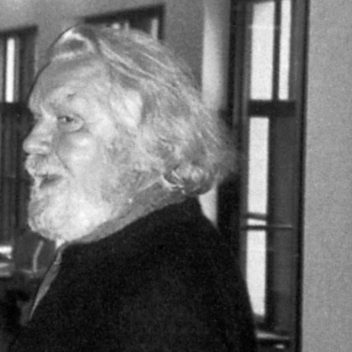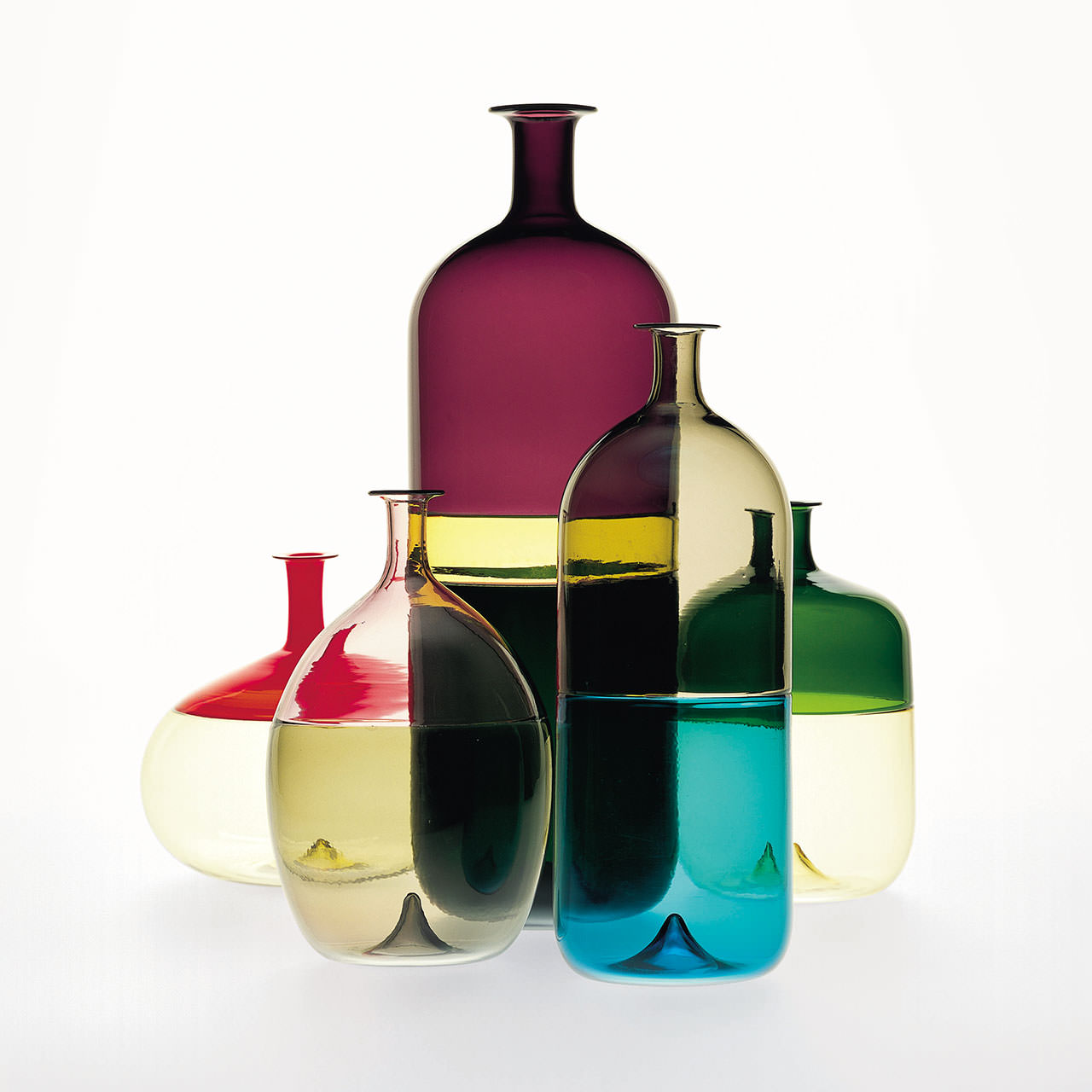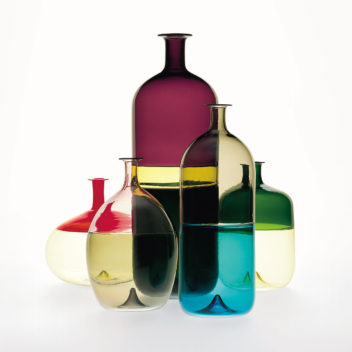
Tapio Wirkkala 1915–1985
Born in Finland, from 1933 to 1936 Tapio Wirkkala attended the Central School for the Industrial Arts in Helsinki, where later he became artistic director. In 1946, he became part of the design team of the Finnish workshop Karhula Ittala, for which he produced his most famous designs and with which he remained associated until his death. Well known in Italy as well, his crystal works were shaped and cut in forms inspired by Nordic nature. A fervent scholar of materials, Wirkkala created objects not only in glass, but also in metal, wood, ceramic, and silver. He came to Venini for the first time in 1966 and continued his collaboration through 1972, only to return again in 1985. Wirkkala mastered Venetian techniques such as incalmo, filigrana, and murrina with great sensitivity. The result was a series of collections of greatly refined glass pieces with extraordinary colors, which wed the purity of Nordic design to the transparency of Murano glass in an incomparable style.


